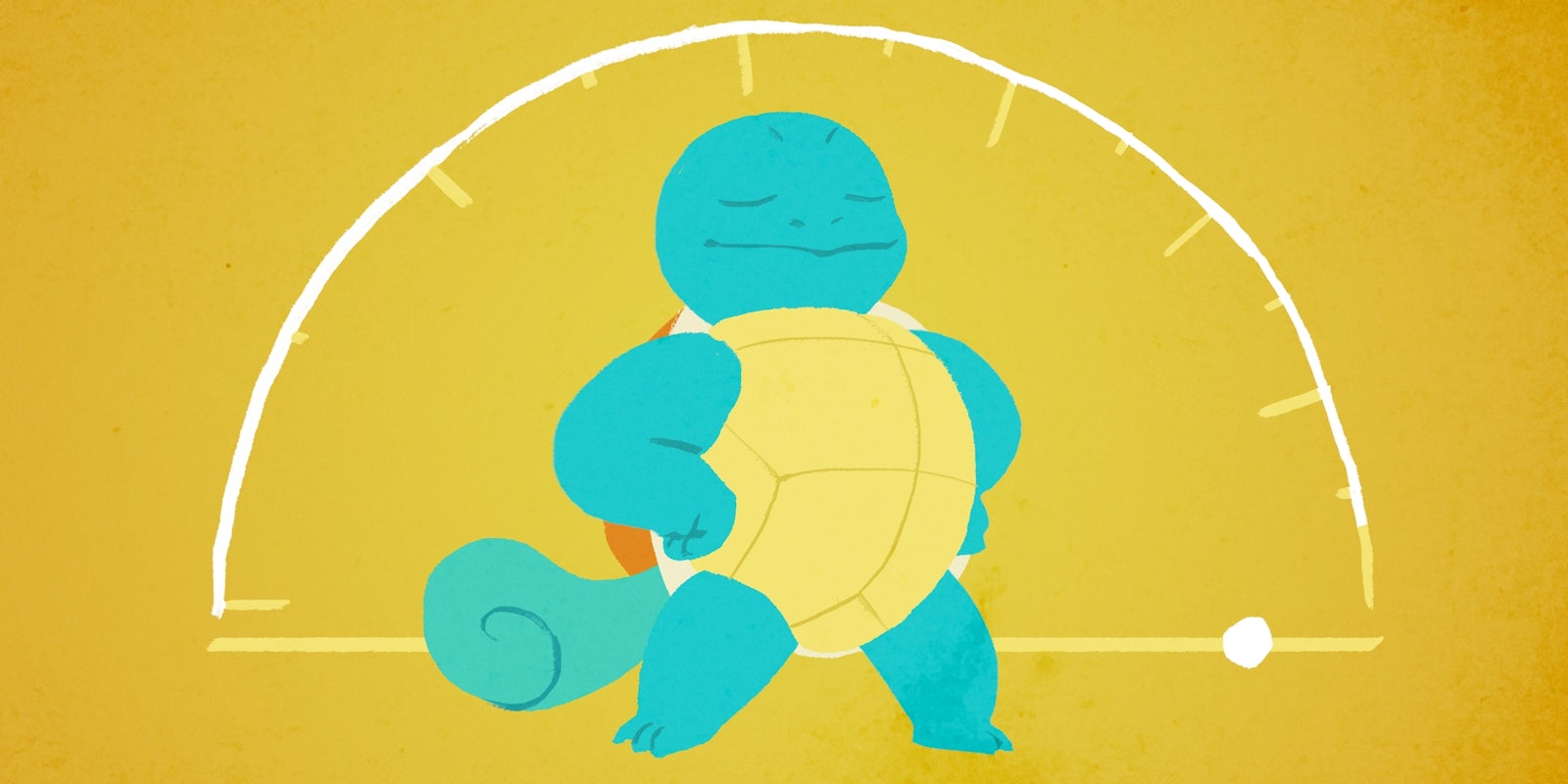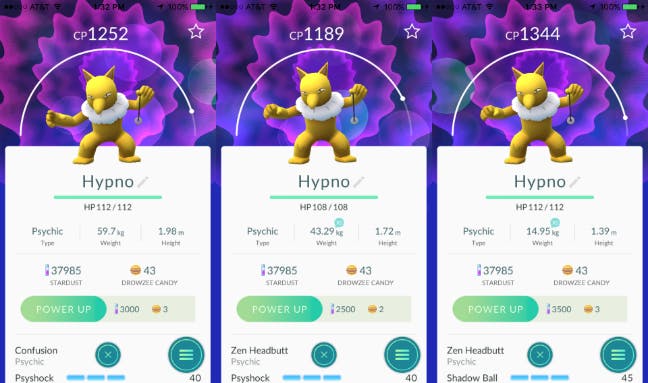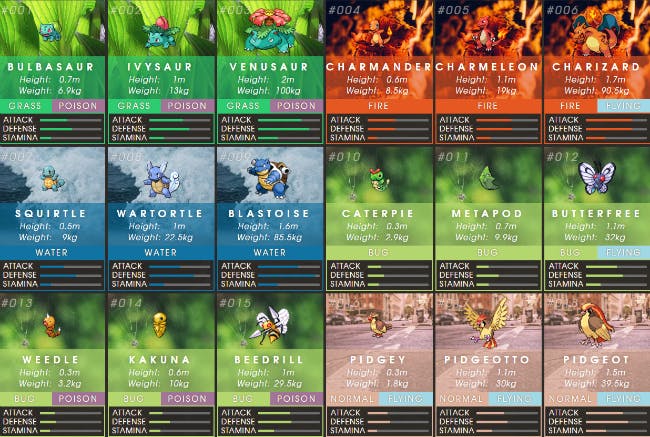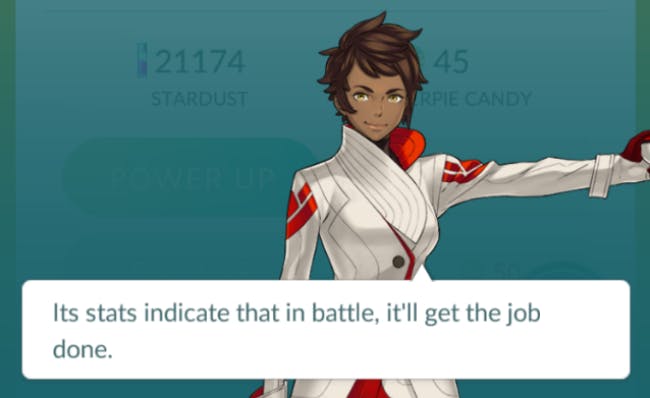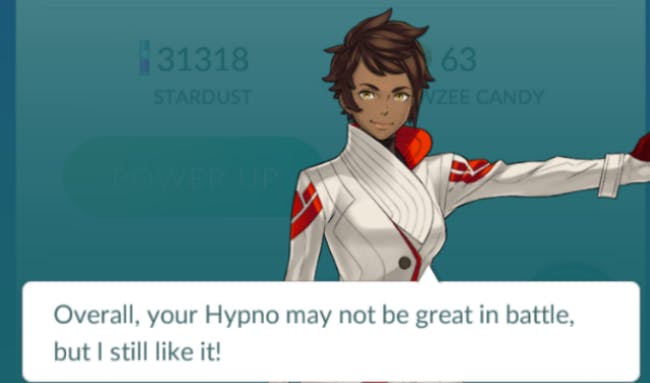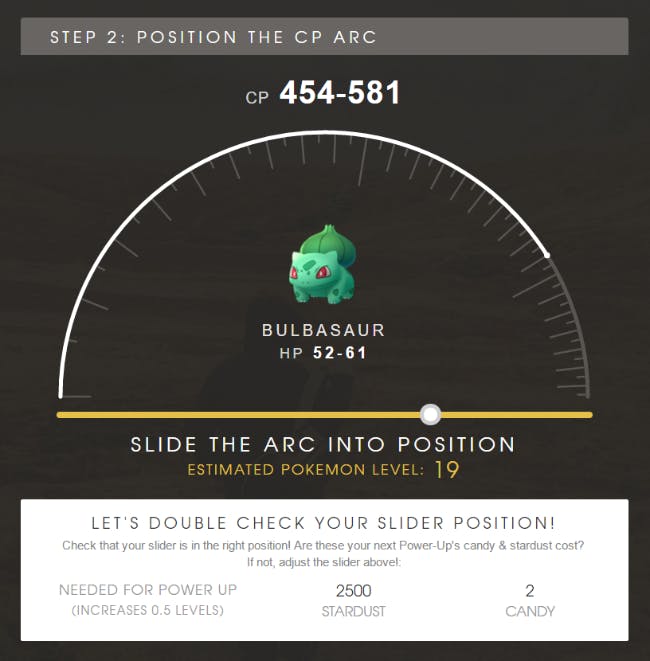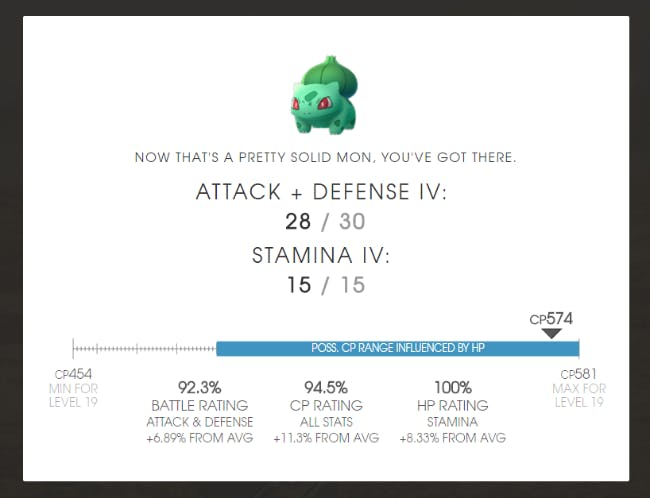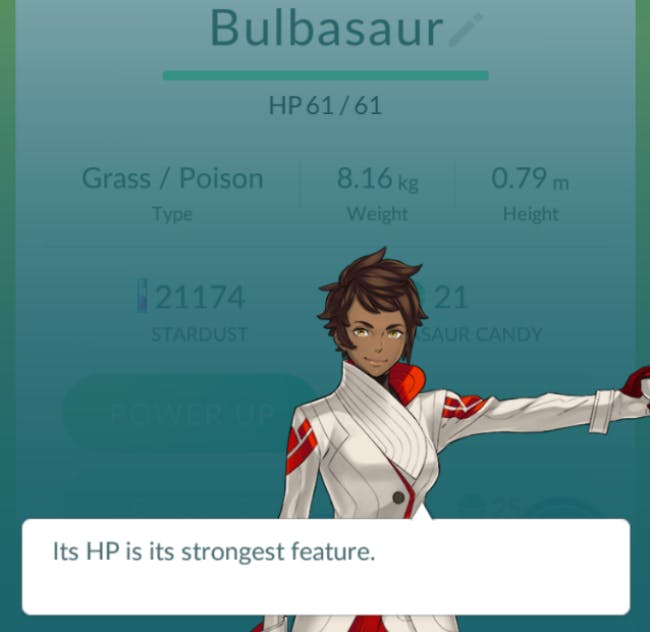When you step up to battle for a gym in Pokémon Go do you want to be a noob fumbling with their Poké Balls or a master trainer ready to kick some serious Poké-ass?
If you’re sticking with Pokémon Go for the long haul there’s plenty left to do. Pokémon Go only launched with 149 of the over 750 species of Pokémon that have appeared in Pokémon games since 1996. It’s hard to imagine Pokémon Go developer Niantic not adding the remaining Pokémon over time. Even if collecting Pokémon is your only interest in Pokémon Go, there should be plenty more hunting to do in the near future.
If you’re interested in endgame activities like gym battling, the upcoming Pokémon trading system, or the possibility of head-to-head Pokémon battles outside of a gym, then just catching them all isn’t good enough. You’ll need to make sure you have top-quality Pokémon in your collection: good fighters and attractive trades.
CP, or combat power, is only the roughest measure of a Pokémon’s value. You need to dig deeper to figure out whether a Pokémon is worth keeping or powering up. And to do that, you need to learn how to appraise the value of your Pokémon without depending on the in-game appraisal tool.
The two things that define a quality Pokémon
All Pokémon have a “moveset,” or a combination of a quick attack and a charge attack, that determines how much damage per second, or DPS, a Pokémon does. Some species of Pokémon can have six potential movesets.
If you’re looking for success in Pokémon Go’s endgame you want Pokémon with the optimal moveset for their species, or the quick attack and charge attack that each do the highest DPS of all the potential choices. Our favorite online tool for looking up optimal movesets was created by Pokémon.gameinfo.io.
Movesets are determined randomly when a Pokémon spawns. Every time you catch a Pokémon you’re metaphorically rolling the dice on whether or not it has the optimal moveset. The rarer a species of Pokémon, the more difficult it is to catch a Pokémon of that type with the optimal moveset, because you don’t get to roll the dice very often.
What makes matters worse is that movesets are also randomized when a Pokémon evolves. A Bulbasaur with the optimal moveset may evolve into an Ivysaur with the worst possible moveset. It’s therefore not worth worrying about movesets until a Pokémon is on its final evolution, if it’s a species that evolves.
Having the optimal moveset is only half of what defines the best Pokémon. How much damage a Pokémon does, and whether or not a Pokémon can last long enough in a fight to do enough damage to win, is determined by the Pokémon’s stats. And this is where Individual Values, or IVs, come into play.
What are IVs?
Each species of Pokémon is defined by three base statistics. Attack determines how much damage a Pokémon can do. Defense determines how difficult it is to damage a Pokémon. Stamina determines how much damage a Pokémon can absorb before it faints. Every Pokémon of the same species has the same base Attack, Defense, and Stamina values.
That doesn’t mean all Pokémon of the same species are identical, however. Each Pokémon also has additional points in all three base stats. Individual Values are the measure of how many bonus points a specific Pokémon has. Those bonus points may only add up to a small advantage during a battle, but they can be enough to make the difference between winning or losing if the Pokémon are otherwise very similar to one another.
Unlike movesets, Individual Values are not supposed to change when a Pokémon evolves into a higher form. We decided to test this theory with 45 evolutions, measuring IVs before and after the Pokémon evolved. In 62 percent of those evolutions the IVs either did not change at all, or the changes were miniscule. 26 percent of the time the IVs improved.
Knowing the IVs of your Pokémon therefore can serve as a guide as to which Pokémon you do or do not want to evolve. When you evolve your Pokémon, you will hopefully wind up with a Pokémon that not only has high IVs, but also has its optimal moveset.
Why you should not use the Pokémon Go appraisal tool alone
On Aug. 24, Niantic patched an appraisal tool into Pokémon Go, to make it easier for players to rate the value of their Pokémon without turning to third-party websites or tools. Unfortunately, the in-game appraisal tool’s results are too vague to be of much use on their own.
The “Appraise” option is located in the same menu as the “Transfer” option. When you select “Appraise,” the leader of your team (Valor, Mystic, or Instinct) pops onto the screen to deliver the appraisal via a series of text messages. Each team leader inexplicably uses a different set of messages to deliver precisely the same information.
The best example of a team leader appraisal that is too vague to be useful is the final appraisal that speaks to a Pokémon’s overall potential in battle. The Team Valor leader, for instance, may say, “Its stats indicate that in battle, it’ll get the job done.” The Team Mystic leader would say, “Its stats are noticeably trending to the positive,” and the Team Instinct leader would say, “It’s definitely got some good stats. Definitely!”
When we looked at all the Pokémon that received this appraisal, and then looked at those Pokémons’ stats as measured by an IV calculator, the stats were all over the place quality-wise, to the point that, “Its stats indicate that in battle, it’ll get the job done,” became meaningless.
The very first appraisal a team leader gives you, on the other hand, might have value. When the Team Valor leader’s first appraisal result for a Pokémon was, “Overall, your [name of Pokémon] may not be great in battle…” approximately 80 percent of the time we found that the IVs were low enough to warrant immediately turning the Pokémon in for candy.
Where common Pokémon like Pidgeys, Caterpie, Weedles, Rattatas, etc. were concerned, 80 percent was good enough. For rarer Pokémon, however, you might not want to risk that 20 percent chance of the appraisal being wrong, especially if it’s a Pokémon that can evolve once or twice, and whose IVs might improve slightly along the way.
In that case you are much better off doing a proper IV assessment, and we found a tool that makes this easy.
How to calculate a Pokémon’s IVs
There are two ways to express a Pokémon’s IVs. The first method is complicated, and involves the percentage chance that a Pokémon has “perfect” or the highest possible IVs. The second method, which is the method we used when conducting all our tests for this guide, provides much simpler and clearer results.
The tool we used to measure IVs was developed by The Silph Road, a subreddit devoted to Pokémon Go. The IV Rater is located on The Silph Road’s research page, which also has a list of all the moves in Pokémon Go. That list comes in handy when trying to figure out which of your Pokémon might still be good in a fight even if they don’t have the optimal moveset.
To use The Silph Road’s IV calculator, first select which species of Pokémon you are going to assess. Then, you have to follow three steps.
Move the slider to select your trainer level. Your trainer level is in the lower-left-hand corner of the main Pokémon Go screen. Trainer level is relevant because it determines the maximum CP to which you can power up a Pokémon. That information then allows the IV calculator to assess the relative value of a Pokémon’s CP.
Next, you have to move a slider to indicate your Pokémon’s CP, and the cost of powering up the Pokémon. As you move the slider to the right, the CP scale above the arc will increase. The Stardust and Candy costs will also increase.
Generally speaking the more Stardust and Candy it costs to power up a Pokémon, the closer that Pokémon is to its maximum CP. Knowing the power up costs therefore, also helps the IV calculator determine the relative value of a Pokemon.
Finally, enter your Pokémon’s CP and HP. Make sure all your information is correct and click “Rate My Pokémon!”
There are four possible results for the general appraisal, that you will see directly below the picture of the Pokémon. You’re looking for the message “Now that’s a pretty solid ‘mon, you’ve got there,” which is the best result possible.
The IVs are expressed as a pair of fractions below the text assessment. The closer a Pokémon is to having the maximum value, the better a Pokémon it is. The Bulbasaur in the example above is only two points away from having a perfect Attack + Defense IV, and has a perfect Stamina IV. This is a Pokémon you’d definitely want to consider evolving.
Attack and Defense have to be expressed as a unified number because the only way to separate Attack and Defense values for a specific Pokémon is to scrape data from the game, which violates Pokémon Go’s terms of service.
This is where the in-game appraisal tool again demonstrates some value. Your team leader will note if a Pokémon’s Attack or Defense values are its strongest feature, so if you know the Attack + Defense IV calculation for that Pokémon, you can at least make an informed guess as to whether the Pokémon is a better attacker or defender.
In the case of the Bulbasaur above, the Team Valor leader says that its Hit Points are its strongest feature. This makes sense because the Bulbasaur has a perfect Stamina IV, and the number of Hit Points a Pokémon has is determined by its Stamina stat.
A team leader could also say that a Pokémon’s Attack or Defense are its strongest feature. Alternately, a team leader could also call out Attack or Defense as a Pokémon’s strongest feature, or say that both Attack and Defense are matched equally. These messages are still unspecific, but they can be useful if you know the Pokémon’s IVs.
Because the trainer in this example has not called out either Attack or Defense, it’s a good guess that the scores are relatively even. And with a combined IV of 28/30, that means this Bulbasaur might be good as either an attacker or a defender. The only way we’d know for sure would be to put this Bulbasaur into the ring to see how it does in a fight.
And that, in the end, is what will separate the Pokémon Go sightseers from the power players. A Pokémon Go master won’t shy away from getting his Pokémon’s hands dirty. Run your IV calculations, figure out your attackers from your defenders, and hit the gyms!

